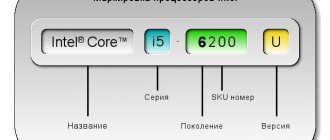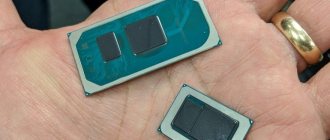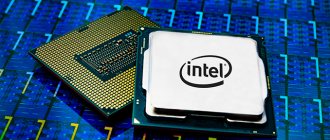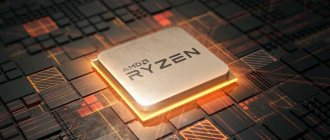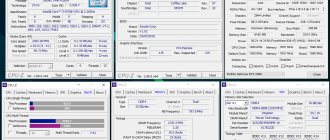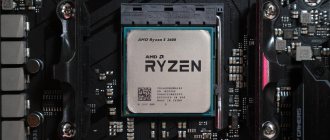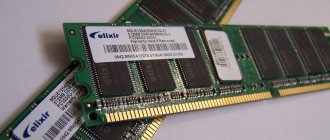AMD is preparing a competitor to Intel Xeon E: Ryzen Embedded V2000 based on Zen 2
05/17/2019 [00:00], Alexey Razin amd epyc hardware navi zen 2 finance
- To speak to shareholders, the head of the company chose statistics for the last couple of years, which were successful against the backdrop of the release of processors with Zen architecture
- The company's anniversary year 2020 is extremely busy with announcements of new products, many of them concentrated in the third quarter
- When creating products, AMD is ready to rely not only on advanced technological processes and architectures, but also on innovative packaging solutions
- Over the past year, AMD managed to increase its share of the PC processor market by four percentage points, a trend that continued in the first quarter of this year
AMD spent the whole day waiting for those who missed the live broadcast of the next shareholder meeting, and another fourteen minutes of recording had to be spent on formal procedures such as voting and introducing shareholders of board members who attended the meeting in a tiny auditorium at the company's new headquarters in Santa -Clara. But when, in the middle of the event, the floor was given to Lisa Su, without unnecessary preludes, she first spoke about AMD’s successes over the previous two years, and then shared her plans for the current year.
If the retrospective part of her speech was devoted mainly to the successes of the first and second generation Zen architecture, as well as graphics processors in the server segment, then towards the end of 2020 the emphasis clearly shifted specifically to the data center segment. The head of AMD recalled that it was server central and graphic processors that accounted for up to 15% of the company’s total revenue in the fourth quarter of last year, and then expressed confidence that the success of graphics processors in the server segment will continue to develop in 2020. In support of this thesis, a slide was shown about the participation of AMD components in the construction of the most powerful supercomputer in the world, called Frontier, which will be launched in 2021.
for poor Navi
This is not to say that the Navi architecture was not mentioned at all in the report by the AMD executive director. On the contrary, it even appeared on the slides several times. First of all, Lisa Su confirmed that gaming graphics solutions with Navi architecture will be introduced in the third quarter of this year. It will also be used this year to create computational accelerators, as reported earlier this month.
Secondly, the head of AMD put the Navi architecture on a par with the Zen 2 processor when she listed the main factors for the company's business growth in the coming years. In the high-performance computing segment, in her opinion, AMD’s success will be determined by the two architectures listed above, the use of so-called “chiplets” in the layout of processors, as well as the 7-nm lithographic process performed by TSMC. In a word, as soon as the initiative on lithography passed from Intel to AMD, the management of the latter began to more often forget about its previous statements about “the priority of products over the technical process.”
Big markets - big prospects
Lisa Su focused on AMD's market strategy. According to her, the company prefers to first enter large market segments and then increase its share of them. By the way, Intel is now trying to rebuild itself in a similar way, which is very burdened by the legacy of previous decades, when the business was built primarily around the PC segment.
Even the questions from the audience that came over the Internet and were limited to just two were related to AMD’s prospects in the server market. When Lisa Su was asked to evaluate the company's potential in the field of artificial intelligence systems, she expressed absolute confidence in the success of AMD platforms and solutions in this promising market. First, the company has processor and graphics architectures. Secondly, it invests in the development of the software ecosystem - for example, the open source ROCm, which attracts a sufficient number of developers.
When asked about AMD management's attitude to the current situation in the server market, Lisa Su admitted that there were some difficulties in the first half of the year, but the company has always shifted its focus in this segment to the second half of the year, and this year will not be an exception. At least, the expansion of 7nm EPYC processors from the Rome family will begin in the second half of 2019. Plus, as noted above, AMD is making a serious bet on the use of GPUs in the server segment. This is partly emphasized by the fact that the first 7nm serial product was the Radeon Instinct MI60 computing accelerator, which was released in the fourth quarter of last year.
An anniversary is an occasion to declare an advantage over competitors
Summing up her short but energetic presentation, Lisa Su showed a slide that argued that AMD had never had such opportunities before. Of the four products illustrated, half were related to the server segment, although the image of the Rome processor simultaneously symbolized the prospects for using a multi-chip layout.
The text annotations were designed to please shareholders: AMD products are present in growing markets with high profit margins, its products are in good demand, it has a long-term plan for several generations to come, and most importantly, AMD is in an unprecedented competitive position. In general, when the most famous slide from this presentation appeared on the screen with a mention of the timing of the announcement of new products, Lisa Su sheepishly added that she would talk about them soon. Apparently, central processors for PCs will be discussed at the opening of Computex 2019 on May twenty-seventh, graphics solutions will come into focus on June tenth at E3 2020, and EPYC server processors with Zen 2 architecture will have to wait until the Hot Chips conference in August, although By now they may have already been presented. Regardless of climatic conditions, this summer promises to be hot.
Permanent URL:
AMD Zen 4 Processors with DDR5 Memory and USB 4.0 Coming to AM5 Platform in 2022
GamersNexus has leaked new information about AMD's next-gen AM5 platform, which will support Ryzen 5000 desktop processors based on the Zen 4 architecture. The site claims that AMD will offer two key technologies in its next-gen desktop lineup, which will include support for DDR5 memory and USB 4.0. Information based on AMD's internal roadmap.
The information obtained indicates that AMD intends to include support for the DDR5 standard in its line of premium desktop computers in 2022.
SK Hynix has already confirmed the start of mass production of DDR5 memory at the end of 2020. The memory will operate at frequencies up to 8400 MHz, and the capacity of one memory module will increase to 64 GB, which is twice as much as existing DDR4 modules. DDR5 will also have a lower operating voltage of 1.1V versus 1.2V on DDR4, resulting in improved operating efficiency.
USB 4.0 will provide increased data transfer speeds over Thunderbolt 3. With up to 40 Gbps throughput, USB 4.0 will provide much faster data transfer speeds and will be compatible with all Thunderbolt 3 devices released to date.
If this information is correct, it means that AMD may release EPYC Genoa processors first before moving on to consumer processors. The Zen 4 core is a mystery in itself, and little is known about it, except for the 5nm process technology and the fact that production will be organized at TSMC factories. This will give AMD a huge advantage in the process technology race against Intel, which by then will be offering processors based on 7nm technology.
It is mentioned that the 4th generation Ryzen 5000 mobile APUs from AMD will be equipped with an improved version of the Zen 3 core, known as Zen 3+. Since mobile components will arrive a little later than desktop PCs, they may use optimized architecture that will provide even greater performance and efficiency, as in the Zen 2-based Ryzen 4000 processors, which are based on a monolithic design but have a slight advantage over desktop processors in in terms of overall efficiency. If launched in 2022, AMD's Ryzen 5000 desktop processors with Zen 4 architecture will compete with Intel's Golden Cove-based Alder Lake lineup, which is expected around the same time.
What will the new architecture bring?
As you know, all processors of the AMD Ryzen 4000 Renoir family, developed on the Zen 2 architecture, have a single design, within which there is one monolithic crystal. This crystal has two sets of cores, each of which, in turn, has four cores, as well as 4 MB of third-level cache. However, in the case of Zen 3, the manufacturer is going to use a slightly different approach. The fact is that the upcoming Ryzen 5000 Cezanne processors will acquire nuclear complexes, which, as mentioned above, will contain 8 cores and a unified L3 cache.
But what can this approach provide to you and me, users? Using this approach in Zen 3 will provide much faster communication between cores and extremely low latency when transferring signals from the cores to the cache and other cores. Simply put, thanks to this solution, all Zen 3 processors will be more productive when performing various complex tasks.
And by the way, the good news is that in this case, each of the cores in the Zen 3 CPU will have direct access to the largest L3 cache without any delays. Thanks to the unified nuclear complex.
Thanks to the new Zen 3 architecture, the design of the processor cores will also change. The detailed details are still unknown to us, but we know at least that the new core design will significantly improve the performance of the processor in single-threaded mode.
Also, the new design will have a good effect on the boost capabilities of the chip, which is especially important for many.
Among the advantages of the upcoming chips is the fact that, thanks to the already mentioned new chip design, processor cores will exchange information more easily than ever before. This is due to much more uniform access of cores to the cache.
And, of course, the cache, improved on all fronts, will also have a better effect on the operation of the multi-threaded mode, which, in turn, will give a noticeable increase in performance in games. Some of the cache fixes coming to Zen 3 chips will address architectural shortcomings that existed before, while other improvements will be aimed specifically at gaming. In this regard, the Ryzen 5000 processors will follow directly after the Ryzen 4000 line - the amount of third-level cache will again be increased.
AMD Zen 3 release date
The exact release date for AMD Zen 3 is not yet known. Recently there were rumors that the CEO of AMD will talk about Ryzen 4000 processors at CES 2020. This date was not chosen by chance - AMD wants to gradually take market share from Intel. Of course, we will not receive detailed characteristics in January, but most likely we will know enough information to draw the first conclusions.
If Zen 3 goes on sale in 2020, it will most likely happen at the same time as Zen 2 did in 2020. So we'll have to wait a little longer until we know more after the conference.
There have been rumors that Zen 4 will be released in 2021 - this is another reason to believe that we will see new Zen 3 processors this year, and no later than the middle. On the other hand, if AMD has the task of continuing to sell old processors, then we will only get access to the new line at the end of this year.
